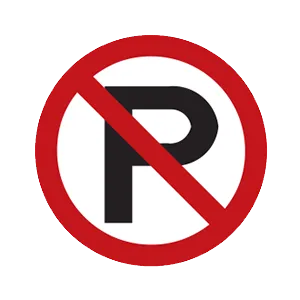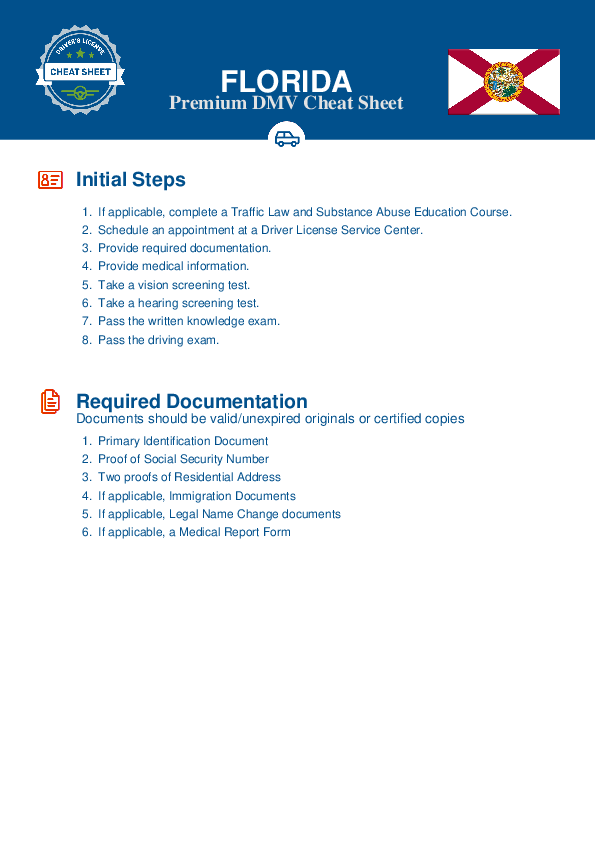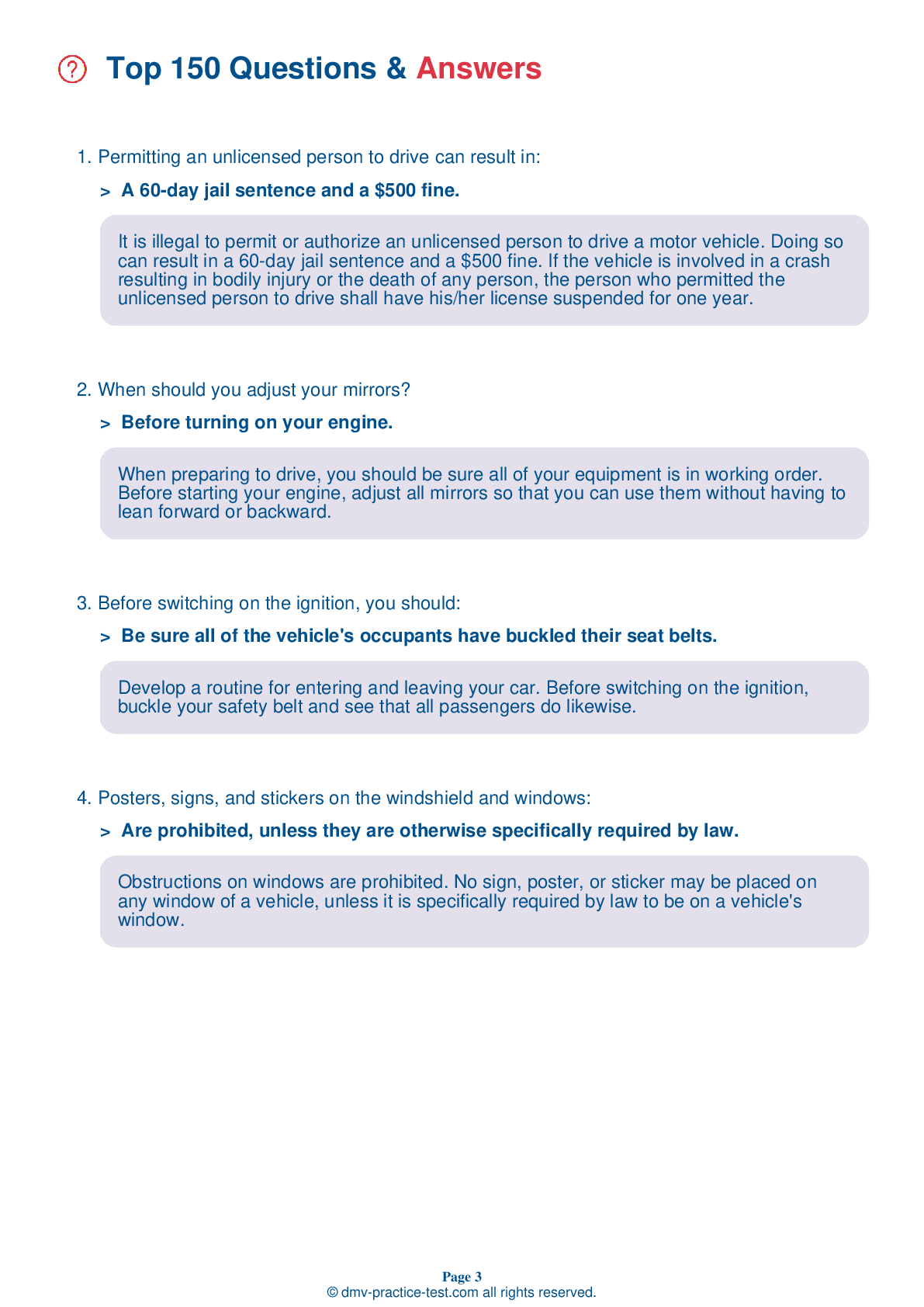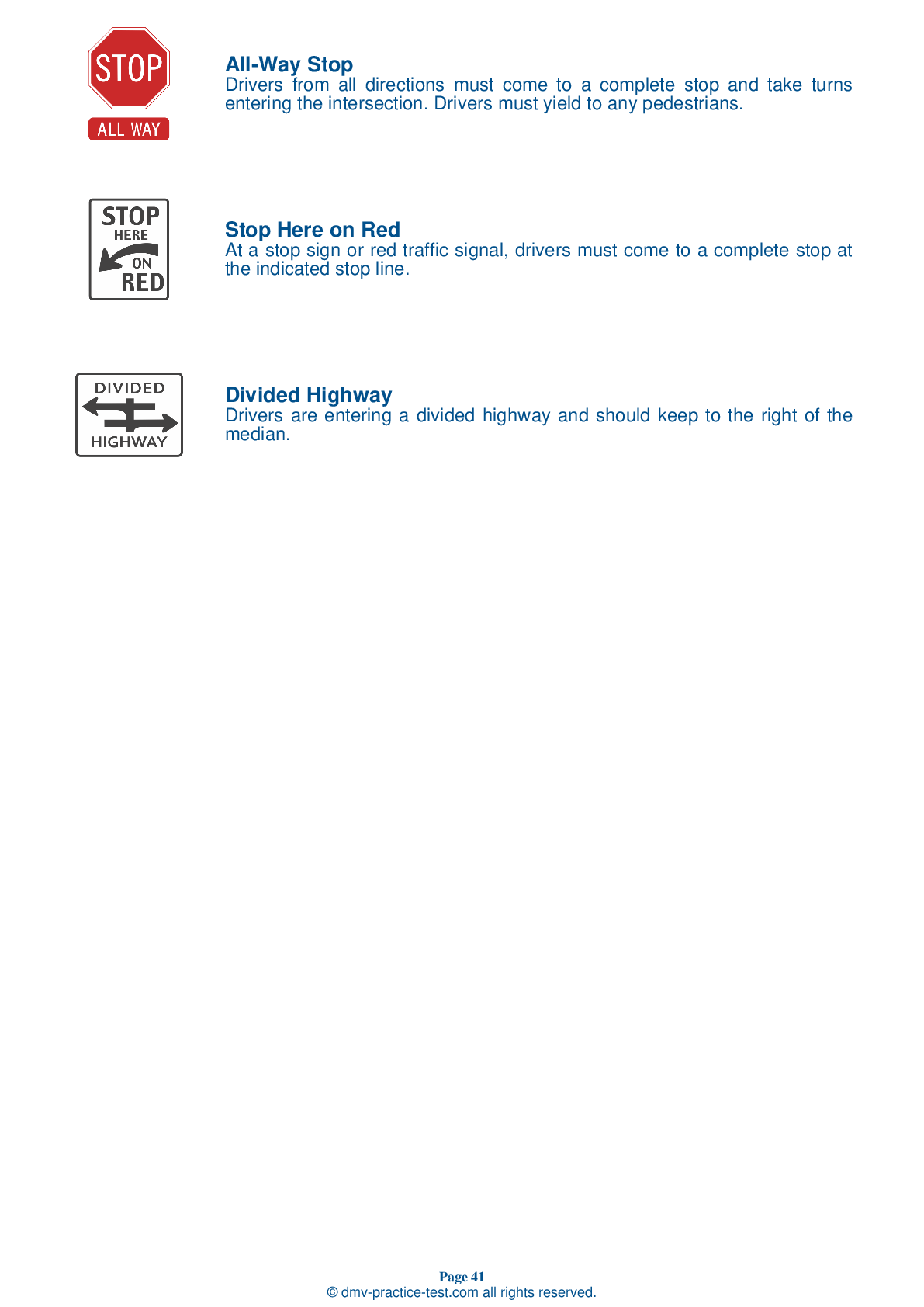FREE Florida DMV Practice Test #12 Page 6 of 7
This set of DMV practise tests for the Florida has been updated for January 2025. It includes questions based on the most important traffic signs and laws for 2025 from the Florida Driver Handbook. To study for the DMV driving permit test and driver's licence exam, use actual questions that are very similar (often identical!) to the DMV driving permit test and driver's licence exam.
Each question on the practise exam has a tip and explanation to help you recall the ideas. Questions about traffic rules, traffic signs, and driving statutes, as well as information from the Driver Handbook, will be included in the written portion of the official DMV test.
You must properly answer 40 of the 50 questions to receive the required passing mark. To help you prepare for your Florida instruction permit or driver's licence, take our DMV practise test.
The DMV exam is offered in a variety of languages.
Using any kind of testing assistance will result in an automatic fail, and the DMV may take additional action against your driver's licence, so stay away from it.
36 . You may drive around the gates at a railroad crossing:
You are required to stop at all railroad crossings when signals warn of an approaching train. These signals may include flashing red lights, a lowered crossing gate, a flagger signaling, or a train’s audible signal of warning. Do not attempt to go around a lowered gate.
37 . While driving on a two-lane road without bicycle lanes, you encounter a bicyclist traveling in the same direction. What is the safest way to pass the bicyclist?
You should pass a bicyclist the same way you would pass any other vehicle, but not so fast or close to them that you throw debris in their face or blow them around with the draft of air from your vehicle. Allow at least 3 feet of space between your side mirror and the bicyclist, or at least 5 feet on higher speed roads or when there is a group of bicyclists. Honking unnecessarily may startle riders and make them more likely to crash.
38 . To prepare for anything coming up on the road ahead, you should:
Your ability to handle dangerous traffic situations depends largely on searching for and identifying problems before meeting them. Looking far ahead of your vehicle does not mean you should simply stare at the center of the road. You need to continually scan the entire road, including the sides of the road.
39 . When you see this black and yellow sign, it means:

This sign indicates that the road ahead changes direction at an extreme angle (in this case, to the right). Before you reach such an extreme curve, you should slow down as much as you would when making a turn at an intersection.
40 . When approaching a traffic signal displaying a steady yellow arrow, drivers:
A steady yellow arrow indicates that a red arrow is about to appear. Stop unless you are already within the intersection.
41 . This sign means:

Regulation signs regulate traffic speed and movement, displaying rules which drivers must obey. This regulation sign indicates that parking is not permitted.
42 . You must stop at a railroad crossing when:
You must stop at a railroad crossing when directed to do so by a flagger or stop sign. Stop when flashing red signals and gates are present and operating.
See the exact questions that will be on the 2025 Florida DMV exam.
99.2% of people who use the cheat sheet pass the FIRST TIME
LT gives us an insight on how the cheat sheet provided her with all the study questions she needed before taking her test.
Joe initially studied with the handbook and failed his test, he eventually found us online, studied and pass his test the first time around.



